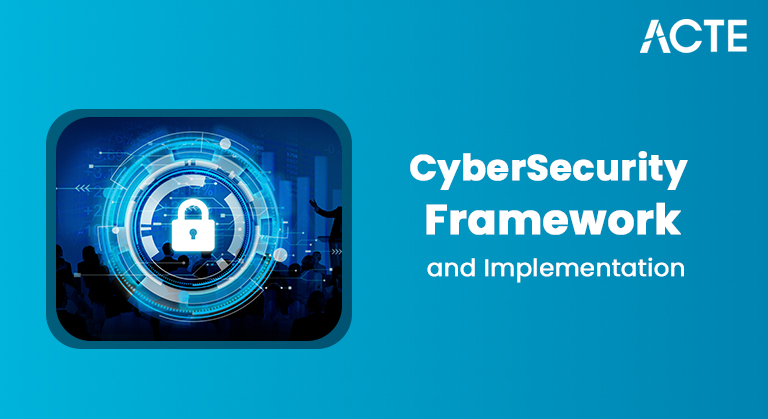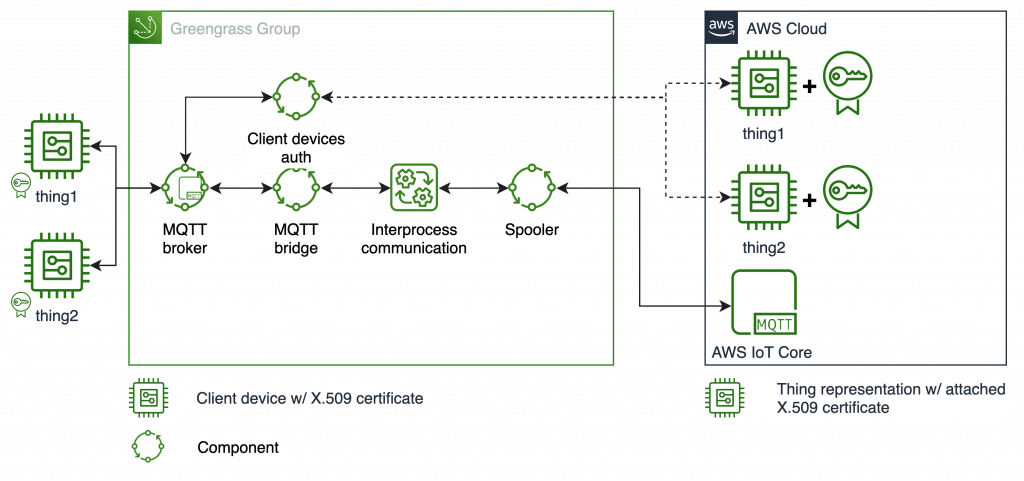
- What is AWS Greengrass?
- AWS Greengrass Core and Devices
- Setting Up AWS Greengrass
- Greengrass Use Cases
- Deploying Lambda Functions to Greengrass
- Security Features of AWS Greengrass
- Best Practices for AWS Greengrass
- Conclusion
What is AWS Greengrass?
AWS Greengrass is an IoT (Internet of Things) service provided by Amazon Web Services (AWS) that extends the power of cloud computing to edge devices. In essence, AWS Greengrass brings the cloud’s computing capabilities to the devices themselves, allowing them to perform real-time data processing, execute machine learning models, and interact with other local devices without requiring constant internet connectivity. This makes it ideal for use cases where edge devices are deployed in remote or offline locations, a scenario covered in Amazon Web Service Training, where learners explore how to implement and manage cloud solutions in edge environments using AWS services for seamless operation even in disconnected settings. At its core, AWS Greengrass allows devices such as gateways, sensors, actuators, and other IoT components to perform local processing, store data, and act autonomously. Greengrass enables edge devices to make real-time decisions, react to data without latency caused by round trips to the cloud, and still sync with AWS when the device is online. One of the critical advantages of AWS Greengrass is that it lets you deploy AWS Lambda functions on edge devices, providing a seamless transition between cloud-based development and edge device execution. With Greengrass, the edge devices can interact with other AWS services, store data locally, and continue to function even when disconnected from the internet, making it an ideal solution for autonomous operations, data-rich applications, and remote sensing.
To Earn Your AWS Certification, Gain Insights From Leading AWS Experts And Advance Your Career With ACTE’s AWS Course Today!
AWS Greengrass Core and Devices
The Greengrass Core is the software component that runs on edge devices, often referred to as “Greengrass Core devices.” These devices serve as the brains of the edge network, enabling communication between connected devices and the cloud. The Greengrass Core is responsible for several key tasks:
- Local Device Communication: The Greengrass Core ensures that devices within the local network (e.g., sensors, and actuators) can communicate with each other even when the internet is not available. It manages device-to-device communication and ensures smooth data transfer without relying on cloud connectivity.
- Running Lambda Functions: Greengrass Core allows you to run AWS Lambda functions on the edge device itself, similar to how the Ultimate Guide to Installing Git on Windows helps users set up essential tools for development, ensuring smooth integration and operation of local functions or services within their respective environments. With Greengrass, you can deploy these functions to edge devices, enabling them to process data locally in real time.
- Local Data Processing: Instead of sending all data to the cloud, which could incur latency and higher bandwidth costs, Greengrass Core processes data locally. This reduces the volume of data being sent to the cloud and allows for faster responses to events, ideal for real-time applications.
- Edge Security and Device Management: Greengrass Core is responsible for ensuring secure communication between devices and between devices and the cloud. It also enables over-the-air (OTA) updates for software and configurations, allowing device management without manual intervention.
- Greengrass Devices: Greengrass devices are any devices or components connected to the Greengrass Core. These devices can be sensors, actuators, cameras, or any other IoT device. These devices send data to the Greengrass Core for local processing or, in some cases, execute specific actions based on Lambda functions.
- Download the software package from the AWS Management Console.
- Follow the instructions provided in the Greengrass documentation to install it on the device (e.g., Raspberry Pi, gateway, or industrial IoT devices).
- The Greengrass Core device runs the local operations.
- Lambda functions that you want to deploy to edge devices.
- Resource definitions, specify any local resources like databases or storage.
- In the Greengrass Console, upload your Lambda function and associate it with the Greengrass group.
- Specify the function’s triggers and execution role. For example, your Lambda function could be triggered by an incoming message from a sensor.
- You can monitor the execution of Lambda functions on your Greengrass Core using AWS CloudWatch Logs.
- Verify that the edge devices are communicating with the Core and that data is being processed locally or uploaded to the cloud when connectivity is available.
- Create the Lambda Function: Develop your Lambda function in the AWS Management Console or locally using the AWS Lambda IDE. Your function should be designed to process events or data from Greengrass devices, similar to how you would Resolve Merge Conflicts in Git, ensuring smooth integration and handling of conflicting changes when working with distributed systems or collaborative development.
- Deploy Lambda Functions: Once your Lambda function is ready, upload it to your Greengrass group. Greengrass will automatically deploy this function to the Greengrass Core on your edge devices. You can configure the function to run on a schedule, in response to specific events, or as part of an IoT workflow.
- Monitor and Manage Lambda Functions: Use AWS CloudWatch to monitor and troubleshoot Lambda functions running on Greengrass. You can view execution logs, track performance metrics, and set up alarms to alert you when certain thresholds are met.
- Optimize Lambda Functions: Write lightweight and efficient Lambda functions to minimize resource consumption and latency. Since these functions run on edge devices with limited resources, efficiency is critical.
- Use Local Storage for Temporary Data: For scenarios where continuous cloud communication is not necessary, store data locally on Greengrass devices and synchronize it with AWS when the device reconnects to the internet.
- Implement Secure Communication: Always use encrypted communication (via TLS) and ensure devices are authenticated before they communicate with the Greengrass Core, similar to Understanding Dockerfile Purpose & Key Concepts, where ensuring security and proper configurations is crucial for building and managing containerized applications effectively.
- Monitor Device Health and Performance: Use AWS CloudWatch to monitor the health and performance of Greengrass devices and Lambda functions. Set up alerts to be notified of any issues.
- Test with Offline Scenarios: Since Greengrass devices can operate offline, always test your edge processing workflows in disconnected environments to ensure seamless operation.
- Plan for Scalability: As your IoT network grows, ensure that your Greengrass Core and Lambda functions are scalable to handle increased data volume and processing demands.

For instance, in an industrial setting, sensors may monitor machinery, collect data, and send it to the Greengrass Core for local analysis. If the data indicates a malfunction or anomaly, the Greengrass Core could execute a Lambda function to trigger an actuator that shuts down the machinery or sends an alert. These devices interact with the Core using a lightweight communication protocol, such as MQTT, enabling real-time data exchange and decision-making.
Setting Up AWS Greengrass
Setting up AWS Greengrass involves several steps, including installing the Greengrass Core software on edge devices, configuring the cloud environment, and deploying Lambda functions. Below are the general steps to set up AWS Greengrass:
Install AWS Greengrass Core Software: To get started with AWS Greengrass, you need to install the Greengrass Core software on your Edge device. This software acts as the local environment where all processing, Lambda execution, and device management occur. AWS Greengrass is compatible with various operating systems, including Linux, and specific hardware architectures.
To install the Greengrass Core software:
Create a Greengrass Group: In the AWS Greengrass Console, create a Greengrass group. This is a logical container for managing your Greengrass Core devices, Lambda functions, and associated resources, similar to the way Git Rebase vs. Git Merge involves managing and integrating changes in a version-controlled project, ensuring a clean and efficient workflow for code and resource management. A Greengrass group includes:
Configure IoT Core: AWS Greengrass relies on AWS IoT Core to manage device connections and security. You’ll need to set up your Greengrass group to work with AWS IoT Core, which provides device authentication, secure communication, and cloud synchronization. Ensure that the devices in your Greengrass group are registered in AWS IoT and that the necessary X.509 certificates are created for secure communication between Greengrass Core and the devices.
Deploy Lambda Functions to Greengrass Core: One of the most powerful features of AWS Greengrass is the ability to deploy AWS Lambda functions to edge devices. Lambda functions allow you to automate tasks, process incoming data, and take actions based on specific events.
Test the Setup: Once the Greengrass Core is installed, and Lambda functions are deployed, it is important to test the entire setup to ensure everything is working as expected.
Interested in Obtaining Your Cloud Computing Certificate? View The AWS Course Offered By ACTE Right Now!
Greengrass Use Cases
AWS Greengrass is versatile and can be used in various IoT applications that require local processing and edge computing. AWS Greengrass is ideal for industrial environments where local decision-making and real-time data processing are crucial. For example, Greengrass can be deployed on edge devices in factories to monitor machinery, collect sensor data, and execute Lambda functions that trigger actions (e.g., shutting down machines, and sending alerts) based on the data. In smart homes, AWS Greengrass enables devices like thermostats, lights, and security cameras to make local decisions. For example, Greengrass could be used to process sensor data from a motion detector and trigger a security camera to start recording when motion is detected. This functionality works even if the devices lose internet connectivity, ensuring that home automation continues to function autonomously, a concept explored in AWS Training, where learners understand how to leverage AWS IoT and edge computing services to enable resilient, offline-capable solutions for connected devices. Greengrass can be used in autonomous vehicles to perform real-time processing of sensor data (e.g., from cameras, LiDAR, GPS). It can also run machine learning models locally to detect obstacles, navigate roads, and make decisions without needing constant communication with the cloud. AWS Greengrass is well-suited for healthcare applications, such as remote monitoring of patients or medical equipment. Devices can collect data from medical sensors, process it locally for analysis, and only send summary data to the cloud, which reduces latency and bandwidth usage. This is especially important in environments where connectivity is intermittent or unreliable. In retail, AWS Greengrass can power smart shelves that track inventory levels using sensors. The local processing capabilities allow the shelves to detect when an item is out of stock and trigger an order request to the cloud. This provides real-time insights into stock levels without relying on continuous cloud connectivity.
Deploying Lambda Functions to Greengrass
One of the standout features of AWS Greengrass is the ability to deploy AWS Lambda functions to edge devices. This capability allows you to execute custom logic locally on the edge device in response to events, such as sensor readings, machine states, or environmental conditions. Deploying Lambda functions to Greengrass is a straightforward process:
Are You Considering Pursuing a AWS Master’s Degree? Enroll For AWS Masters Course Today!
Security Features of AWS Greengrass
Security is a top priority in AWS Greengrass, and AWS provides several built-in features to ensure the integrity and confidentiality of the data and operations. Here are the key security features of AWS Greengrass, Device Authentication and Authorization AWS Greengrass uses X.509 certificates to authenticate devices and ensure secure communication between devices and Greengrass Core. Each device in a Greengrass group must be registered in AWS IoT and must present its certificate for secure communication. All communication between Greengrass Core and devices is encrypted using TLS (Transport Layer Security), ensuring that sensitive data is protected while in transit, similar to how Load Balancing ensures the secure and efficient distribution of traffic across servers, maintaining performance and reliability in cloud-based applications. Additionally, Greengrass supports data encryption at rest to safeguard data stored locally on devices. AWS Greengrass allows you to define IAM roles and policies for Lambda functions and devices. These roles define what resources can be accessed, and what actions can be performed, by the devices and Lambda functions. Greengrass supports over-the-air (OTA) updates, enabling secure updates of software and firmware on edge devices.

This ensures that devices remain secure and up-to-date without requiring manual intervention. AWS Greengrass also supports secure, fine-grained access control, ensuring that only authorized users and devices can perform specific actions. With continuous monitoring and auditing through AWS CloudTrail, you can track security-related activities across your Greengrass environment. Additionally, Greengrass integrates with AWS Identity and Access Management (IAM) to enforce secure access to other AWS resources, ensuring compliance with organizational security policies.
Best Practices for AWS Greengrass
To maximize the effectiveness of AWS Greengrass and ensure that your IoT applications run smoothly, here are some best practices:
Are You Preparing for AWS Jobs? Check Out ACTE’s AWS Interview Questions & Answer to Boost Your Preparation!
Conclusion
AWS Greengrass is a powerful service that extends AWS cloud capabilities to edge devices, enabling real-time data processing, machine learning, and autonomous decision-making. By running AWS Lambda functions locally on edge devices, Greengrass ensures that IoT devices can function independently, even in remote or offline environments. With its robust security features, local data processing, and seamless integration with AWS IoT Core, AWS Greengrass is ideal for a wide range of use cases, from industrial IoT and healthcare to smart homes and autonomous vehicles, a key topic covered in AWS Training, where learners gain practical knowledge on deploying and managing edge computing solutions in various industries. By following best practices and optimizing your setup for security, efficiency, and scalability, you can unlock the full potential of AWS Greengrass and build resilient, scalable edge computing solutions. Whether you’re processing sensor data locally or enabling real-time decision-making in disconnected environments, AWS Greengrass empowers your IoT applications to operate effectively and securely at the edge.





